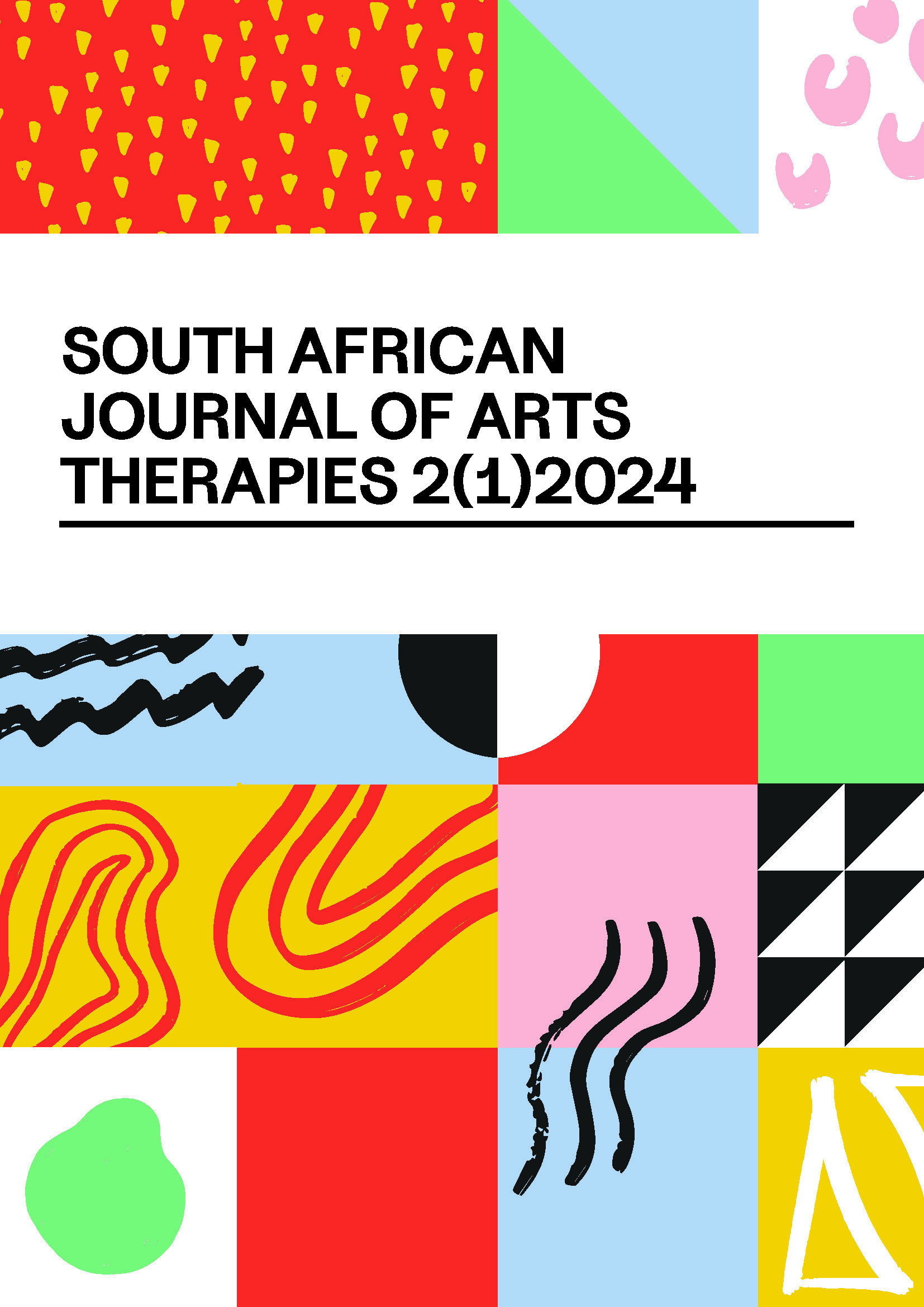Editorial and Reflections on the Conference for SAJAT: Objectives of the Training Art Therapists for Social Justice Conference
Main Article Content
Keywords
Art therapy, art therapy conference, south africa, social justice
Abstract
One of the key aspects of arts for social justice is the central recognition of its collaborative nature that foregrounds interconnectedness and empathy. The forum of a conference in the early stages of the development of the Art Therapy qualification at the University of Johannesburg enabled both evaluation and reflection by situating student participants as dynamic partners. We engaged the first cohort of Art therapy Masters students to collaborate in designing the conference and website for the field to share and exchange their practice with leaders in global change initiatives. The conference theme focused on training and practice of art therapy in social justice in the Global South and the key note address by Dr Lireko Qhobela cautions us to be intentional about attending to the historical wounds. Panel presentations included Art therapy in the Global South: Now and next (Moon et al), Research as Storytelling (Potash and Kapitan), Using the arts to work with refugees and displaced persons in times of crisis and war (Speizers et al) as well Art therapy and social activism in community-based projects (Myburgh et al). A social dreaming workshop was a practical visualisation that included approximately 70 participants entitled Deep diving towards a vison for social justice: a visual dream matrix, (H Berman and N Pule). The Art Therapy Masters students published their research projects in the newly established Journal of Arts Therapies (SAJAT) which was launched as highlight to conclude the conference. They participated in critical evaluation through the peer review process and were encouraged to invite and engage with a range of leaders in the field. The students were asked to critically reflect on how they understood their own agency in the field of transformative art therapy practice and social justice using group and individual art practice and writing. Their comments and experiences can be integrated and shared with future cohorts in enriching the field as situated and textured to a local context.
Article Metrics Graph
References
Kapitan, L. (2015). Social action in practice: Shifting the ethnocentric lens in cross-cultural art therapy encounters. Art Therapy, 32(3), 104-111. https://doi.org/10.1080/07421656.2015.1060403
Kapitan, L. (2007). Will art therapy cross the digital culture divide?. Art Therapy, 24(2), 50-51. https://doi.org/10.1080/07421656.2007.10129591
Moonga N. (2024) Draft reflections on the University of Johannesburg Art Therapies Conference (adaption forthcoming).
Patton, M. Q. (2010). Developmental evaluation: Applying complexity concepts to enhance innovation and use. Guilford Press.
Reason, P., & Bradbury, H. (Eds.). (2001). Handbook of action research: Participative inquiry and practice. Sage.
Lopez, E., Eng, E., Robinson, N., & Wang, C. C. (2005). Photovoice as a community-based participatory research method. In: Methods in community-based participatory research for health (pp. 326-348). Wiley
Talwar, S. (2015). Culture, diversity, and identity: From margins to center. Art Therapy, 32(3), 100–103. https://doi.org/10.1080/07421656.2015.1060563






